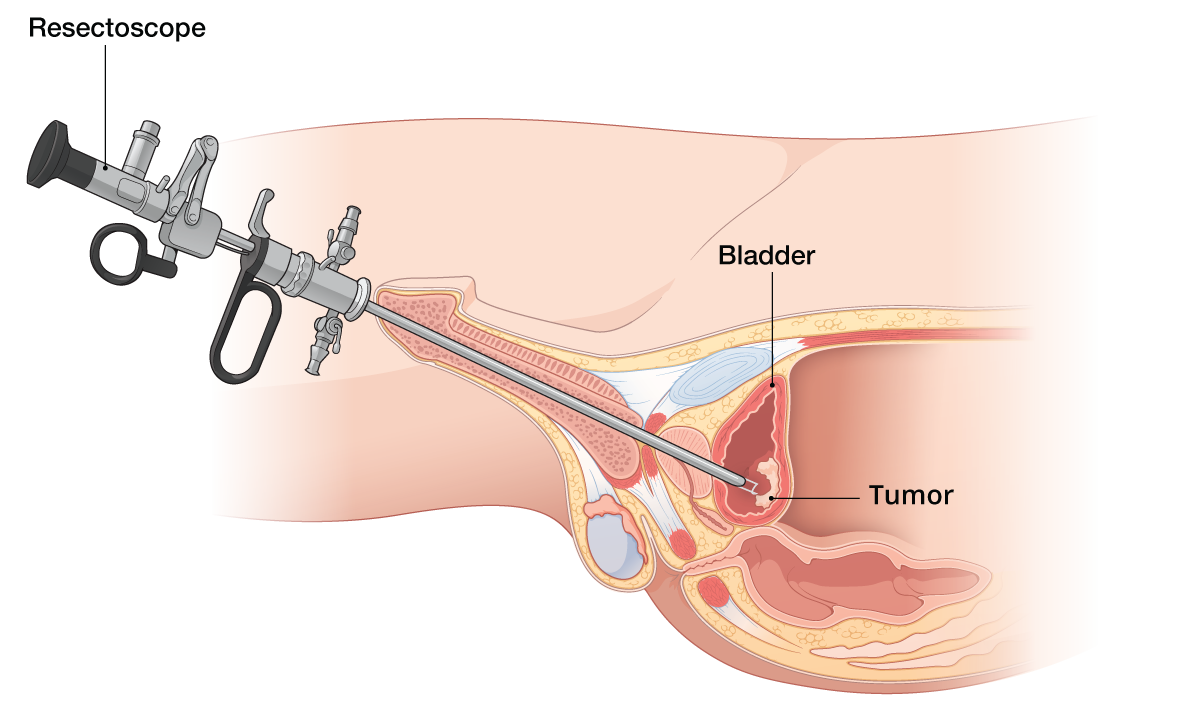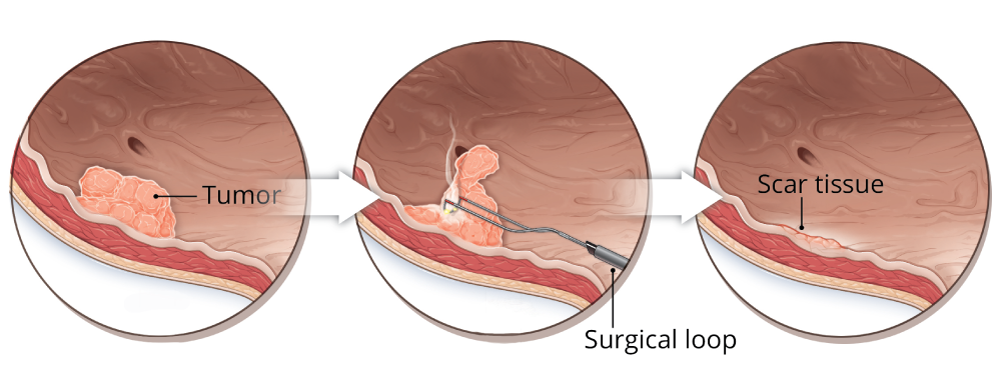This surgical procedure is used in both the diagnosis and treatment of bladder cancer. Transurethral resection of bladder tumor (TURBT) allows your surgeon to biopsy your tumor, or remove an entire small tumor from the inside of your bladder, while leaving the bladder intact. TURBT is essential to obtain a biopsy to confirm the cancer diagnosis and determine the stage and grade of your cancer.
What happens during the surgery?
At the start of the procedure, you will be given a numbing drug (anesthetic). Generally, two options are available: general anesthesia where you take a nap for the entire procedure, or local anesthesia, where you remain awake, but are given a drug through a needle in your back to numb the lower half of your body.
During a TURBT procedure, the surgeon inserts a tool called a resectoscope through the urethra to reach the inside of your bladder. This tool has a surgical loop on it that resects or cuts off a sample of tumor tissue to be analyzed by a pathologist, or resects the entire tumor from your bladder (if it's small enough). TURBT is used as a treatment for patients with early-stage bladder cancer, and is typically followed by intravesical therapy.
What happens after TURBT surgery?
You will either go home the same day or stay in the hospital overnight. You will probably wear a small drainage tube called a catheter, to help drain your urine for a few days. You may also have to urinate more often. These side effects should go away with in two weeks of the operation. Be sure to tell your physician or nurse if you have any bleeding or pain. Your provider will need to know how much bleeding you have and will be able to give you medication to relax your bladder and avoid spasms.
Some patients will have intravesical chemotherapy in which the chemotherapy drug is delivered directly into the bladder through the catheter. The chemotherapy fills the bladder and destroys any microscopic tumor cells not removed by the surgery.

